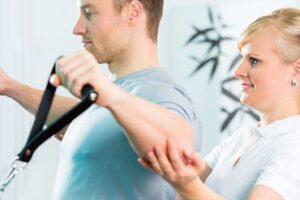Regular exercise can slow aging process
While many in their 80s and 90s may be starting to take it easy, 85-year-old track star Irene Obera is at the other end of the spectrum. Setting multiple world athletics records in her age category, she is one of a growing band of “master athletes” who represent the extreme end of what is physically possible later in life. Another is John Starbrook, who at 87 became the oldest runner to complete the 2018 London Marathon.
Studies suggest regular exercise is more effective than any drug yet invented to prevent conditions facing older people, such as muscle loss.
he greater health of older exercisers compared to their sedentary counterparts can lead people to believe physical activity can reverse or slow down the ageing process.
But the reality is that these active older people are exactly as they should be.
In our distant past we were hunter-gatherers, and our bodies are designed to be physically active.
So, if an active 80-year-old has a similar physiology to an inactive 50-year-old, it is the younger person who appears older than they should be, not the other way around.
We often confuse the effects of inactivity with the ageing process itself, and believe certain diseases are purely the result of getting older.
Actually, our modern sedentary lifestyles have simply speeded up our underlying age-related decline. This contributes to the onset of diseases such as type 2 diabetes, cardiovascular disease.
What can you do?
Most people should not be aiming to become a world-beating athlete in their advanced years; they don’t need to be to reach optimal health.
Instead, incorporating small regular bouts of physical activity – brisk walking or ballroom dancing – into your routine is the key.
Physical activity is one of the cornerstones of a healthy life. Even if you can’t be a competitive athlete, starting to regularly exercise in your 20s and 30s is likely to pay off later on.
And if you’re past that point, just gently becoming active will do a huge amount of good.


